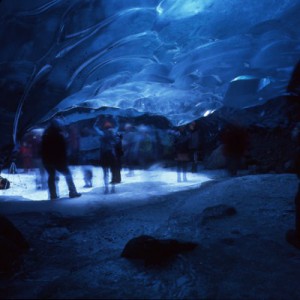 Glaciers are slow. In idiomatic English, to move at a “glacial pace” is to move so slowly that a casual observer will not notice the movement at all. Yet over the years I’ve been making images featuring glacial ice, the rate of observable change is phenomenally fast. Even as I compose and capture an image, the ice is melting and the image is disappearing. The majestic, glowing cavern of today is the rotted, open-top canyon of the next week. It is dry open rock the week after that.
Glaciers are slow. In idiomatic English, to move at a “glacial pace” is to move so slowly that a casual observer will not notice the movement at all. Yet over the years I’ve been making images featuring glacial ice, the rate of observable change is phenomenally fast. Even as I compose and capture an image, the ice is melting and the image is disappearing. The majestic, glowing cavern of today is the rotted, open-top canyon of the next week. It is dry open rock the week after that.
The folks at Extreme Ice Survey make time-lapse images of melting ice around the world. Two of their cameras are trained on “my” glacier, the Mendenhall, and their one-minute video covers seven years of activity. Time-lapse video is an excellent medium to convey the enormous change which takes place at a “glacial pace”. I don’t have an MF3D time-lapse video. I create still images. I offer you only a single still, and ask, “How do we identify the ghosts?”
Today, fourteen months after that image was made, those ghostly people still walk the planet. The blue palace at which they marveled melted off into the ocean long ago.
[Edited July 8, 2015 to add]
I visited the ice this week and am saddened by what I found. Because of the continued ice-recession, the walk is much longer and harder than it was a few years ago, and the destination is a pathetic shadow of its former self. This may be the final image of my ice series.